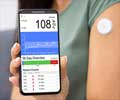HIIP, a novel inhaled insulin delivery system offers a promising alternative to injectable insulin therapy.
The disease burden of diabetes continues to grow and currently affects more that 18 million Americans and their families. These data emphasize a need for alternative diabetes therapies with earlier more physiologic use of insulin.
The delivery of insulin by the lung may provide an attractive alternative for many patients with diabetes. However, alternative insulin delivery systems must meet certain pharmacokinetic and glucodynamic requirements to reach maximum utility. Specifically, the dose-response characteristics of inhaled insulin should be similar to those of injectable insulins, like human regular insulin or fast-acting insulin analogs such as insulin lispro. A recent study, published in the October issue of Diabetes Care, evaluated the key performance features of a novel inhaled insulin delivery system -- human insulin inhalation powder (HIIP) -- based on AIR particle technology and its relative biopotency compared with subcutaneous (SC) insulin lispro.The researchers enrolled 20 healthy, nonsmoking, male or female subjects (aged 29.6 years, BMI 23.2 kg/m2) with normal forced vital capacity and forced expiratory volume in an open-label, randomized, seven-period, euglycemic glucose clamp, cross-over trial. Each subject received up to 4 single doses of HIIP and 3 doses of SC lispro from 5 to 18 days apart.
HIIP demonstrated a similar rapid onset but an extended time exposure and a prolonged duration of effect compared with SC lispro. While the time-action profile was longer for HIIP than for SC lispro, both treatments showed rapid initial absorption and similar overall PK exposure and GD effect.
Remarkably, in the current study not a single episode of cough was registered, suggesting an excellent tolerability of the inhaled insulin when formulated by the AIR particle technology. However, the authors warn that this result needs to be confirmed in much larger phase 3 trials. Taken together, these results support the potential utility of inhaled insulin as an alternative to insulin injections. Because the fear of injections is a frequent cause for delaying appropriate care in patients with type 2 diabetes, inhaled insulin may provide a treatment that delivers effective doses of insulin in a less threatening, more satisfying manner, potentially resulting in improved patient compliance and better outcomes.











